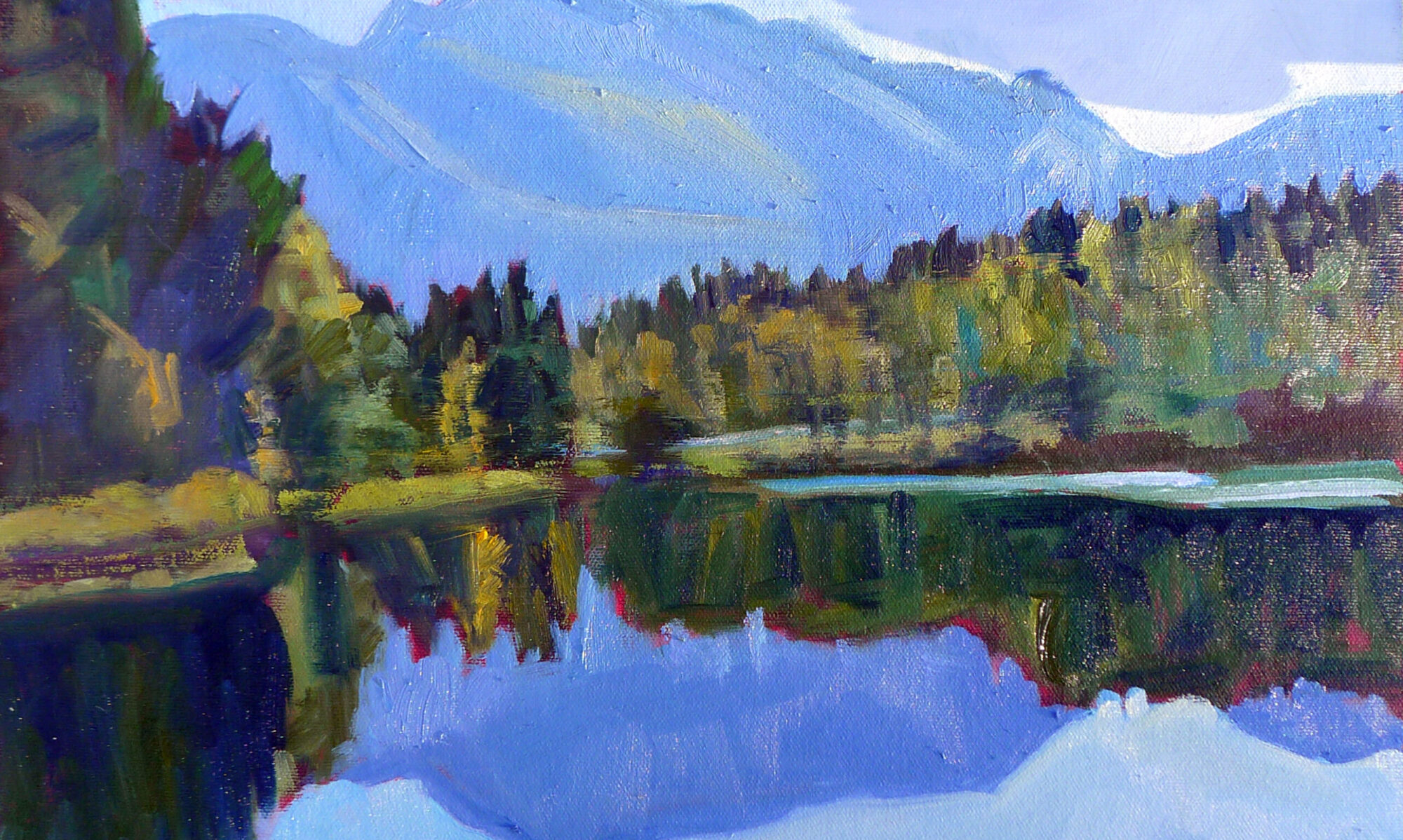Gabriel-from-Quebec tipped us off that Île d’Orléans, just a few minutes downriver from Quebec City, would be a great place to paint. Electronic media puts you in contact with people you would never have met otherwise. They’re frequently excellent sources of information.
The Île was settled in the 17th century and evidence of its feudal system is still visible. Small holdings stretch in narrow strips down to the water. This put tenants close to their neighbors and maximized access to the water.

Quebec City is also a city of waterfalls. Montmorency Falls is 272′ tall, making it nearly a hundred feet taller than Niagara Falls. And it has the requisite suspension bridge, too.
It’s hard to imagine that a feudal system was ever successful in the New World, let alone that it persisted for centuries, but that happened in French Canada. Seigneuries were not granted to nobles as in France, nor did the land grants confer nobility. They were generally given to military officers and churchmen for services rendered. Later, these seigneuries were purchased by canny English and Scottish investors who recognized a profit when they saw it.
The tenants cleared the land, built their own homes and barns, farmed, and paid rent to the seigneur. They were suckers to the Crown, since in New France, land was plentiful and labor was dear. Still, the system was not formally abolished until 1854, long after the demise of New France. The last rents were not settled until—seriously—1970.
Île d’Orléans is too varied to ever be captured in one painting. In some places it is Quebec agriculture, with strawberry fields and apple orchards marching neatly down to the St. Lawrence River. In others, it looks surprisingly like the Maine coast, with seasonal cottages set among woodland. Houses of mellow golden stone dot the landscape.
While I painted, Mary quizzed me on French animal names. Vaches and poulet I already knew; dauphin confused me. Wasn’t that the title for the heir apparent to the French crown? Souris amused me, because I’d just painted in a Manitoba town of that name last week, and it was, indeed, just a little bit mousy. It was a beautiful, warm, autumn day. Abeilles buzzed among the the clover.
I hated to leave Quebec without another painting, even if our detour to Île d’Orléans had been time-consuming. At La Pocatière, I stopped to paint the sun setting over the St. Lawrence estuary. Even this far upriver, the St. Lawrence is vast enough that there are beluga whale nurseries. At the moment, there were also two men parasail-waterskiing in the stiff wind.
The Bas-Saint-Laurent is a beautiful area and so is the St. John River Valley, where we stopped for the night. This is home country. In fact, a right turn and we could be home for lunch. In many ways, that knowledge is the hardest thing we’ve encountered so far.








